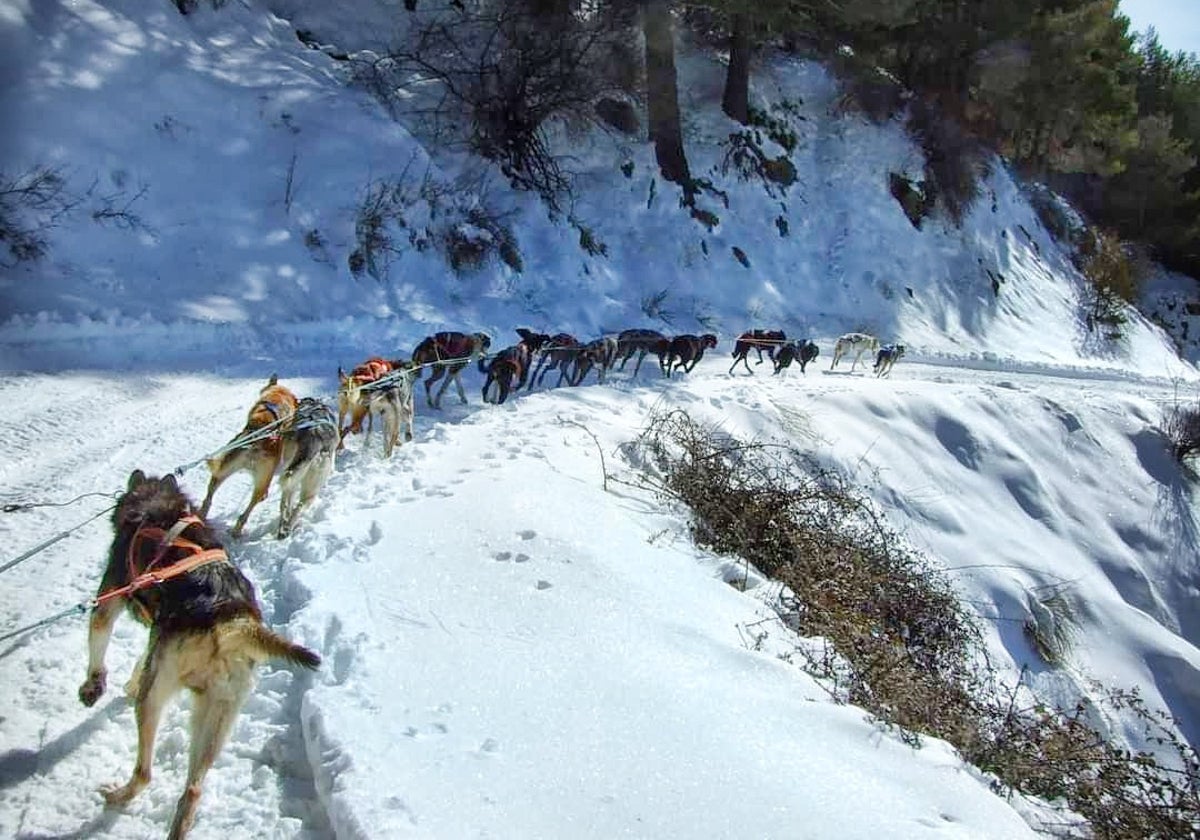

Sections
Highlight

Alekk M. Saanders
Sierra Nevada
Friday, 17 January 2025, 17:47
The origins of this winter sport go back to ancient times. In frosty northern regions such as Lapland and Siberia, sledges or skis pulled by strong dogs were an important means of transport.
Local residents used dogs, direct descendants of the polar wolf. Their domestication and crossbreeding with more docile breeds gave rise to such breeds as the Alaskan Malamute, Siberian Husky and Samoyed, which are known as good sled dogs that really like to run fast and pull sleds behind them.
As for the term ‘mushing’, it comes from the French ‘marche’, a word used when herding animals. However, the English spelling ‘mush’ became popular and the winter sport was internationalised as mushing.
The birth of mushing as a sport dates back to 1925 and it happened in Nome, located in the state of Alaska. After the gold rush, which caused a rapid population growth, a diphtheria epidemic broke out there. Because of the weather conditions, the only possible way to get the necessary medication was via the Iditarod Path. This was covered by dog sled, over 1,600 kilometres in less than a week. Forty years later, mushing made it to Europe. A first mushing competition was arranged in Switzerland in 1965 and the activity quickly spread across the European continent.
Mushing developed well in Spain. A great stage dog race called Pirena was held in the Pyrenees until 2013. The aim of this annual competition was to cross the Pyrenees from west to east, passing through Navarre, Aragon, Catalonia, Andorra and France in a fortnight. Between 21 January 2012 and 4 February 2012, Pirena held its last edition with record participation and a significant increase in the number of female athletes, with a total of 50 teams, 33 sleds and 17 skijorers (cross-country skiers pulled by dogs).
Today there are several enclaves prepared and equipped for mushing. Most of them are located in the Aragonese Pyrenees. For example, Bielsa in Huesca province offers a special dog sledding route that is suitable for all ages and highly recommended for children.
The so-called ‘Nordic Areas’ - Espacio Nórdico Llanos del Hospital and Espacio Nórdico Pineta - have large pistes and comfortable conditions for mushing. The Espacio Nórdico Linza is considered the best one, thanks to the characteristics of its circuit. It hosts the Navarre and Basque Mushing Championship, an event that brings together the best mushers in the country. There are a few tracks in the Catalan Pyrenees, in Baqueira-Beret ski resort.
The Spanish pioneer company in mushing is Aventura Polar en el Sur, based in the Sierra Nevada. They have been organising dog sledding in the Granada mountains since 1995.
Owner Fran Maruenda told SUR in English that because of the instability of the snow cover in the Sierra Nevada, they offer special carts on wheels pulled by Alaskan Huskies (additionally, they also have sleds for riding on snow).
The route takes adventurers through some of the Sierra Nevada's most picturesque scenery, surrounded by snowy peaks. The one-and-a-half-hour ride, or rather a unique winter experience, costs 100 euros. During the trip, they stop in the middle of nature for a cup of coffee made over an open fire.

Modern mushing is not only a team of hardy, venturesome dogs pulling sleds hundreds of kilometres along snowy trails. Over time, so-called dryland (or urban) mushing has gained popularity. It represents canicross and bikejoring, or rather races involving runners or cyclists, respectively, using harnessed dogs for energy and speed.
This type of mushing on dry land originated in Europe as a method of training dogs for mushing, or dog sledding, during the summer months. Andalucia has been actively involved in the development of dryland mushing, offering its towns to host races - Manilva (Malaga province), Priego de Córdoba (Cordoba province) and Alcalá de Guadaira (Seville province).
The last one was the epicentre of mushing for the fourth consecutive year earlier this month. The Copa de España de Mushing was organised by Alcalá town council, through the municipal sports separtment, together with the Royal Spanish Winter Sports Federation and the Andalusian Winter Sports Federation. The event was held in collaboration with the Alcalá-based Dunhuellas Mushing Club.
Around 300 sportsmen and sportswomen from different parts of Spain including the current Canicross world champions and runners-up competed in the pine forests of La Boticaria, in the heart of the Riberas del Guadaira natural monument. Incidentally, in 2023, Spain was honoured to host the Mushing World Championships at Olvega in Soria province in Castilla y León.
Publicidad
Publicidad
Publicidad
Publicidad
Esta funcionalidad es exclusiva para suscriptores.
Reporta un error en esta noticia
Comentar es una ventaja exclusiva para registrados
¿Ya eres registrado?
Inicia sesiónNecesitas ser suscriptor para poder votar.